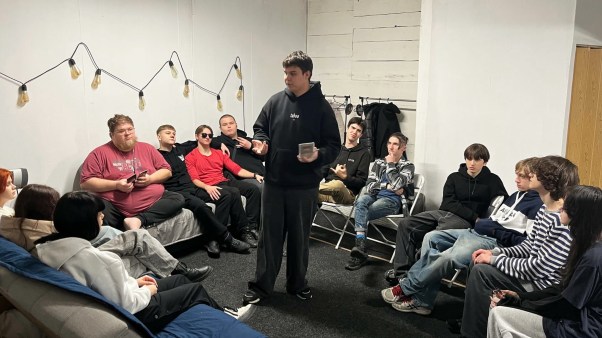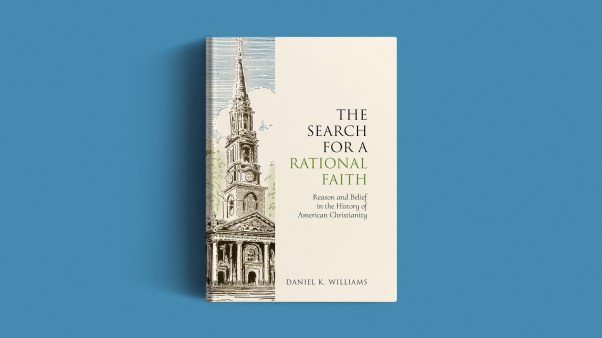The first time I heard the term, I was a campus minister at the University of Missouri. I figured I knew how to respond to it. But after several dozen conversations with deconstructing college students, it became clear: I didn’t have the tools to help these students re-engage with Jesus.
Often, students would raise fairly typical objections to Christianity in these conversations, and I had fairly typical answers to their questions. Sometimes, I could tell these answers landed well. It was exactly what they needed—a clear, compassionate answer to their doubts.
But for others, something wasn’t clicking. I’d offer my gracious, rational answers to their questions, but it just wasn’t working. By “not working,” I don’t mean the student was unconvinced—I mean they were simply unmoved. They’d often say something like, “Yeah, I get what you’re saying.” But their expression said something else:“You didn’t hear the heart behind my question.”
I continued in this pattern for about two years, until it dawned on me: The intellectual answers to my students’ questions were important. Very important. But for many of these young people—especially those who used the term deconstruction—those facts and proofs weren’t the right starting point. Not the first conversation we needed to have. Not even the second or third.
Over time, I began thinking of my students who were deconstructing in terms of three general categories, or buckets, before I began to address their doubts, concerns, or anger toward the church. There are deconstructing students, and then there are deconstructing students. They may all use the term, but these young people are coming from very different places.
So the first conversation I learned to have with students was this: “What do you mean by deconstruction?” Sometimes I would even lay out the three categories. In almost every case, students found them extremely helpful. As a pastor, it gave me a clearer sense of how to walk with them wisely and well.
As you work with younger (or older!) people deconstructing their faith, I hope and pray the categories below are helpful toward your own shepherding conversations.
Bucket 1: The Doubting. These are the people who are eager to hear our apologetics answers. They don’t feel angry at the church or personally burned. They are highly motivated to believe. However, there are cracks in the pavement. They have lingering doubts—unspoken fears and nagging questions about faith and about themselves.
Sometimes they’ve been shunned or treated like an apostate just for being intellectually curious about Christianity. They’ve been told that “real Christians” don’t ask questions. And so they’ve learned to keep quiet or to assume they’re on the verge of falling away.
Pastoring these folks means surprising them with a gracious, thoughtful answer to their doubts. It means inviting them to freely express their concerns. It means demonstrating to them that Jesus is not anxious about their hard questions and that difficult questions are often an invitation toward deeper faith.
Sometimes—not often—those doubting may describe their questions as “deconstruction.” That may be because they’ve seen publicly deconstructed folks online expressing similar concerns or doubts as reasons to abandon faith altogether. It may also be because they’ve never been part of a healthy church where doubts were expressed and addressed winsomely. So instead of understanding the their questions as normal and their doubts as growing pains, they fear they are going astray.
This is why I’ll often encourage these students to use a different word—doubt. As we’ll see below, the difference matters.
Bucket 2: The Disillusioned. The disillusioned often have all sorts of doubts too, but their struggle isn’t intellectual—it’s emotional and cultural. They’re disappointed. Disoriented. Disheartened. Especially when it comes to the American evangelical project.
I believe—and statistics back this up—that this group represents a huge swath of those who’ve dechurched. Two decades ago, when I left the church, I was here. I’d received good, thoughtful answers to my questions. That wasn’t the issue. The issue was the mismatch I saw between Jesus’ teaching, church history, and American evangelicalism.
It wasn’t that American evangelicals were sinners or even that many prominent leaders had fallen. What unsettled me is that they did not even seem to have the same mission as Jesus, the early church, or even our Protestant forefathers and mothers.
According to research by Michael Graham and Jim Davis, nearly two-thirds of the dechurched respondents say that their parents’ expressions of evangelical faith played a role in pushing them away. The top five reasons?
• Their emphasis on culture war lost me over time (14%)
• Their lack of love, joy, gentleness, kindness, and generosity (14%)
• Their inability to listen (14%)
• Their inability to engage with other viewpoints (13%)
• Their racial attitudes or actions (13%)
That tracks with my experience. Even more striking, many of the dechurched are still theologically orthodox in their beliefs. Like me two decades ago, they don’t feel ready to walk away from Jesus or even the church at large. They’re just deeply disillusioned with the American evangelical church’s vision of its own mission. It doesn’t align.
So what do they need?
This was the steepest learning curve for me over my years working with college students. But eventually, I cracked the code, and it wasn’t that complicated. Students needed what I needed 20 years ago. They needed me to (1) affirm their concerns about American evangelicalism; (2) widen their vision to include the global, historic church, and (3) refocus our conversations on the gospel message of Jesus.
This is why in my book The Light in Our Eyes, I devote several chapters to doing this very work. I name what’s broken in American evangelicalism. Then I introduce readers to our historical context, contrasting it with the vision of the early church, the historical Protestant church, and the original vision of evangelicalism. Finally, I use historical Protestant categories (Jesus as our Prophet, Priest, and King—as explained in the Heidelberg Catechism) to reintroduce readers to Jesus’ bigger, better, and more beautiful vision for the church.
Bucket 3: The Deconstructing. Finally, there arethose who are truly deconstructing—those who’ve moved beyond doubt or disillusionment and have made a leap—consciously or unconsciously—into a secular framing of Christianity.
Jacques Derrida—the literature professor who coined the term deconstruction—defined this vision of life as that which sees all “truth” as originating in power structures. This means, for the true deconstructor, the history of the church, the Scriptures, and local pastors have no real authority over the definition of Christianity. They’re seen as part of the problem.
The irony is that this supposed rejection of external influence often leads to a faith that is remarkably similar to the American and Western vision of life. The great paradox of individualism is that the individual, in rejecting all authorities, fails to see how their own individuality is deeply shaped by the informal authorities around them: television, music, cultural assumptions formed by centuries of history and philosophy, Western rhythms of life, and more.
Thetrue deconstructor needs the same kind of pre-evangelism practices we’d offer to someone outside the faith. Their secularized vision of love, freedom, and beauty may sound inspiring, but it is dead in the water. It promises what it cannot provide and leaves people wanting.
As pastors, our task is to affirm the deep longings underneath their questions—the ache for wholeness, justice, and belonging—and then gently uncover how the secularized vision they’ve adopted falls short. Only Jesus—as our loving Priest, liberating Prophet, and peaceful King—can bring these dreams from hope to fulfillment.
Nicholas McDonald serves as associate pastor at Redeemer Presbyterian in Indianapolis. He is the author of The Light in Our Eyes and Faker.








